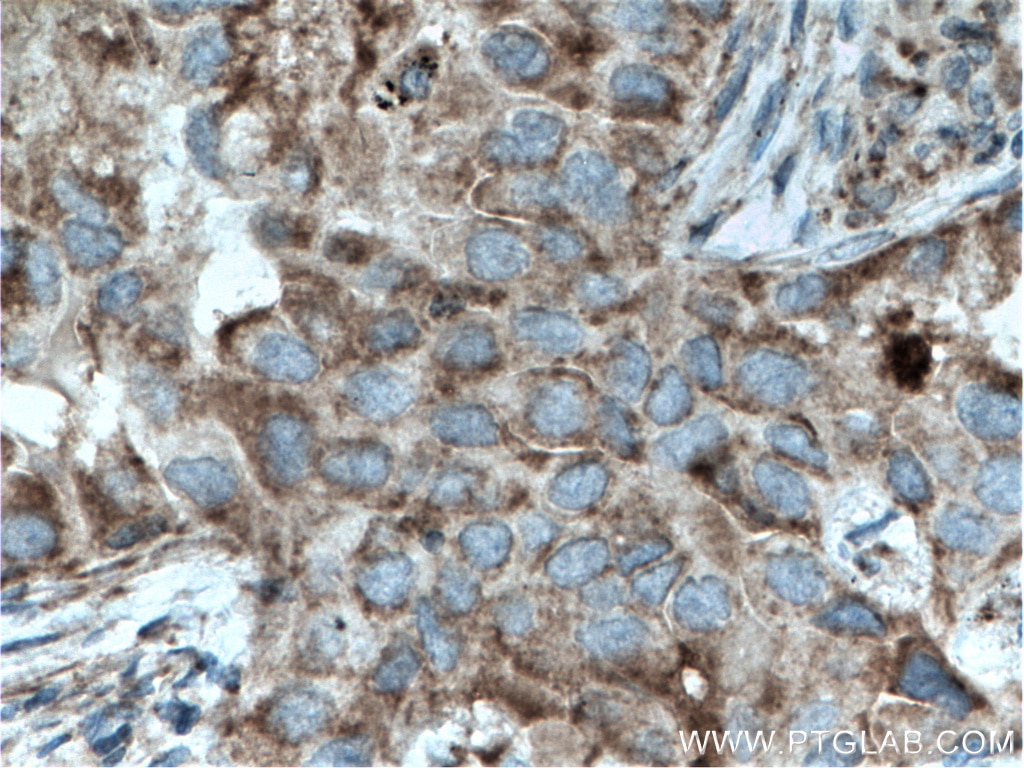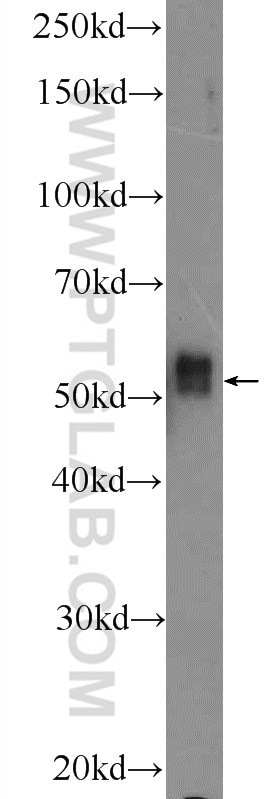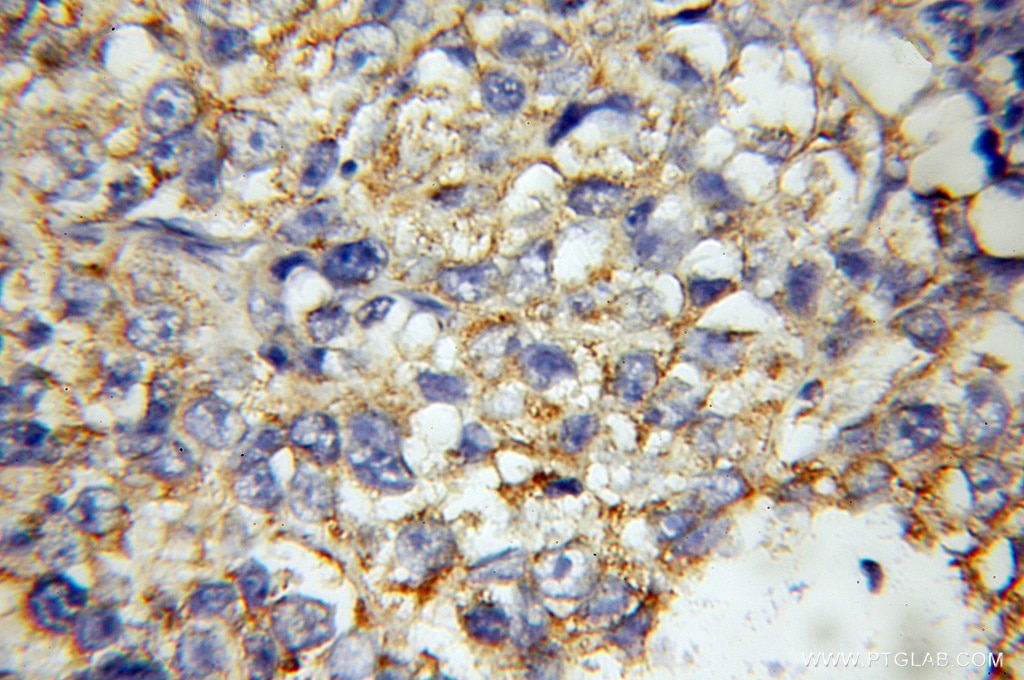Anticorps Polyclonal de lapin anti-ST2
ST2 Polyclonal Antibody for WB, IHC, ELISA
Hôte / Isotype
Lapin / IgG
Réactivité testée
Humain, rat, souris
Applications
WB, IF, IHC, ELISA
Conjugaison
Non conjugué
N° de cat : 11920-1-AP
Synonymes
Galerie de données de validation
Applications testées
| Résultats positifs en WB | tissu placentaire humain, tissu pulmonaire de rat, tissu pulmonaire de souris |
| Résultats positifs en IHC | tissu cardiaque de souris, tissu de cancer du poumon humain, tissu placentaire humain il est suggéré de démasquer l'antigène avec un tampon de TE buffer pH 9.0; (*) À défaut, 'le démasquage de l'antigène peut être 'effectué avec un tampon citrate pH 6,0. |
Dilution recommandée
| Application | Dilution |
|---|---|
| Western Blot (WB) | WB : 1:500-1:2000 |
| Immunohistochimie (IHC) | IHC : 1:1000-1:4000 |
| It is recommended that this reagent should be titrated in each testing system to obtain optimal results. | |
| Sample-dependent, check data in validation data gallery | |
Applications publiées
| KD/KO | See 1 publications below |
| WB | See 19 publications below |
| IHC | See 14 publications below |
| IF | See 13 publications below |
Informations sur le produit
11920-1-AP cible ST2 dans les applications de WB, IF, IHC, ELISA et montre une réactivité avec des échantillons Humain, rat, souris
| Réactivité | Humain, rat, souris |
| Réactivité citée | rat, Humain, souris |
| Hôte / Isotype | Lapin / IgG |
| Clonalité | Polyclonal |
| Type | Anticorps |
| Immunogène | ST2 Protéine recombinante Ag2555 |
| Nom complet | interleukin 1 receptor-like 1 |
| Masse moléculaire calculée | 63 kDa, 37 kDa, 30 kDa |
| Poids moléculaire observé | 50 kDa |
| Numéro d’acquisition GenBank | BC030975 |
| Symbole du gène | IL1RL1 |
| Identification du gène (NCBI) | 9173 |
| Conjugaison | Non conjugué |
| Forme | Liquide |
| Méthode de purification | Purification par affinité contre l'antigène |
| Tampon de stockage | PBS avec azoture de sodium à 0,02 % et glycérol à 50 % pH 7,3 |
| Conditions de stockage | Stocker à -20°C. Stable pendant un an après l'expédition. L'aliquotage n'est pas nécessaire pour le stockage à -20oC Les 20ul contiennent 0,1% de BSA. |
Informations générales
ST2, also known as IL1RL1, is a member of the IL-1 superfamily and serves as the receptor for IL-33. It plays a major role in immune and inflammatory responses. ST2 is expressed by various types of immune cells including Th2 cells, mast cells, type 2 innate lymphoid cells, eosinophils, basophils, NK cells, and non-immune cells, including cardiomyocytes. Two forms of ST2 exist: a membrane-bound form and a soluble form (sST2). The membrane-bound form activates the MyD88/NF-κB signaling pathway to enhance mast cell, Th2, regulatory T cell (Treg), and innate lymphoid cell type 2 functions. sST2 acts as a decoy receptor. (PMID: 27055914; 23999434; 28484466)
Protocole
| Product Specific Protocols | |
|---|---|
| WB protocol for ST2 antibody 11920-1-AP | Download protocol |
| IHC protocol for ST2 antibody 11920-1-AP | Download protocol |
| Standard Protocols | |
|---|---|
| Click here to view our Standard Protocols |
Publications
| Species | Application | Title |
|---|---|---|
Adv Healthc Mater Ultrasmall Nanoparticles Regulate Immune Microenvironment by Activating IL-33/ST2 to Alleviate Renal Ischemia-Reperfusion Injury | ||
J Invest Dermatol Increased Type 2 Innate Lymphoid Cells in Patients with Drug Reaction with Eosinophilia and Systemic Symptoms Syndrome. | ||
Oncogene The reciprocal interaction between tumor cells and activated fibroblasts mediated by TNF-α/IL-33/ST2L signaling promotes gastric cancer metastasis. | ||
Am J Pathol Cross Talk between ST2 and Transforming Growth Factor-β Receptor Signaling Promotes Renal Fibrosis | ||
J Neuroinflammation Red nucleus IL-33 facilitates the early development of mononeuropathic pain in male rats by inducing TNF-α through activating ERK, p38 MAPK, and JAK2/STAT3. |















